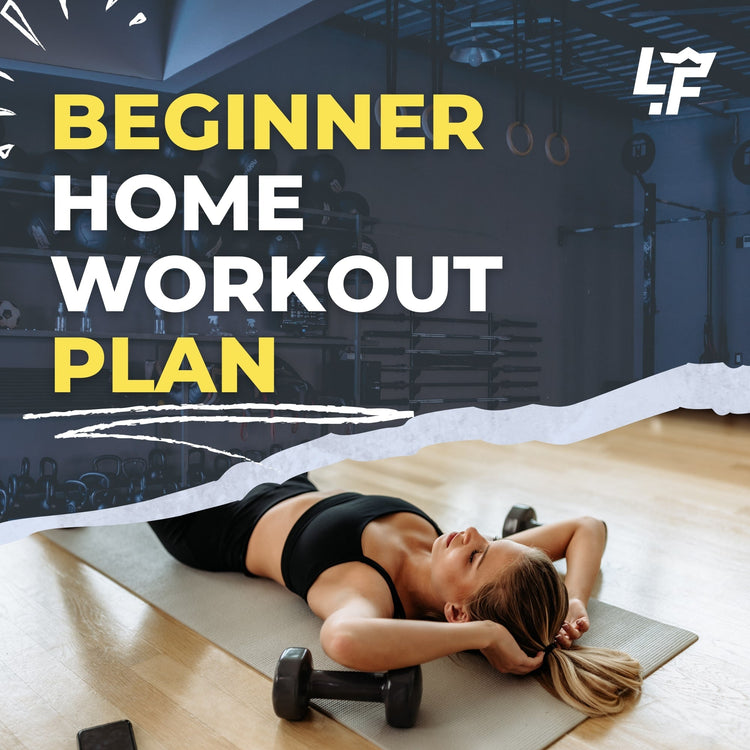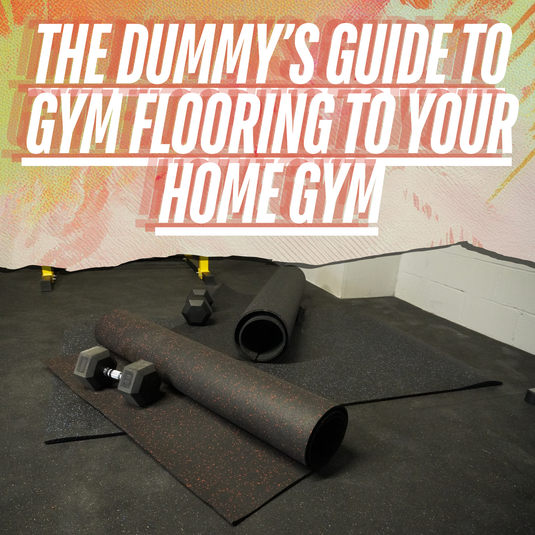Beginner Workout Plan: Start at Home

⏱️ Estimated Read Time: 6 minutes
🧠 TL;DR
- Beginner Workout Plan: Start at Home offers effective, accessible movements for targeted results.
- This guide is designed to help you move smarter, build strength, and stay consistent.
✍️ Summary
This post explores beginner workout plan: start at home in a way that’s actionable and easy to follow. Whether you're new to this style of training or leveling up, it includes practical takeaways for your routine.
📚 Table of Contents
If you're new to working out, this guide is for you. We're here to help you start a beginner workout plan that you can do right at home. Working out at home saves time and money and gives you privacy. You also don’t need much equipment to begin.
This article will teach you how to start a workout routine for beginners. You’ll learn how to set up your home gym, why warming up and cooling down are important, and a full-body workout plan for all major muscle groups. This guide covers workout routines for both men and women.
Why Start a Workout Routine at Home?
Starting a workout routine at home comes with several benefits:
Convenience: You can work out anytime that fits your schedule without needing to travel to a gym.
Cost-saving: No need for a gym membership. You can start with minimal equipment.
Privacy: Feel comfortable working out in your own space.
Flexibility: Adjust your workout routine to suit your needs and preferences.
You can start home workouts with just a few basic items. You don’t need a full gym setup. A gym mat, resistance bands, and dumbbells are enough to start. A study on home-based exercise shows that working out at home is effective for staying active and healthy.
Setting Up Your Home Gym
Setting up a workout space at home can be simple and cheap. Here are some essential items to get started:
- Gym Mats: These provide a comfortable surface for floor exercises and help protect your floors.
- Resistance Bands: Great for strength training and versatile enough for various exercises. For more exercises, check out this guide on resistance band exercises.
- Dumbbells: Start with a light to moderate weight that you can handle comfortably. You can follow this dumbbell workout plan for more ideas.
Consider these tips to set up your home gym:
- Choose a Dedicated Space: Find an area in your home where you can leave your equipment set up.
- Keep It Organized: Use storage solutions like racks or bins to keep your equipment tidy.
- Ensure Good Lighting: A well-lit space can boost your mood and help you see your form clearly.
Beginner Workout Plan Overview
A well-structured beginner workout plan is key to building a solid fitness foundation. Here's what to keep in mind:
- Workout Routine: Focus on full-body exercises that target all major muscle groups. For more exercises, read this article on bodyweight exercises.
Here's a simple weekly schedule to follow:
- Monday: Workout
- Tuesday: Rest
- Wednesday: Workout
- Thursday: Rest
- Friday: Workout
- Saturday: Rest
- Sunday: Active Recovery (light activity like walking or stretching)
Consistency is important. Stick to your schedule and slowly increase the intensity as you go. Regular exercise improves mood and overall health. For more information, read this study on the benefits of regular exercise.
Warm-Up Routine
Warming up is an important part of any workout plan. It gets your body ready for exercise and helps prevent injuries. Here are some simple warm-up exercises you can do at home:
Jumping Jacks
Perform for 1-2 minutes to get your heart rate up. Jump your feet out wide while raising your arms overhead, then jump back to the starting position.
Benefits:
- Increases heart rate and boosts circulation.
- Warms up the entire body quickly.
Tips:
- Keep your core engaged as you jump.
- Land softly to reduce impact on your joints.
Arm Circles
Extend your arms out to the sides and make small, controlled circles for 30 seconds. Reverse the direction for another 30 seconds.
Benefits:
- Loosens up the shoulder joints.
- Prepares the shoulders for upper-body exercises.
Tips:
- Maintain a straight posture throughout.
- Avoid tensing your neck or shoulders.
Leg Swings
Hold onto a wall or chair for balance and swing one leg forward and backward. Repeat for 30 seconds on each leg.
Benefits:
- Increases hip mobility.
- Prepares the lower body for dynamic movement.
Tips:
- Keep your movement controlled and smooth.
- Avoid twisting your upper body as you swing.
These exercises increase blood flow and prepare your muscles for the workout. For detailed warm-up routines, read this article on effective warm-ups.
Full-Body Workout Routine for Beginners
This beginner workout plan focuses on exercises that target all major muscle groups. It’s designed to be simple yet effective, using minimal equipment. Here’s a sample workout routine:
Squats
Perform 3 sets of 10–15 reps. Use your body weight or hold dumbbells for added resistance.
Benefits:
- Strengthens the legs, glutes, and core.
- Improves lower-body mobility.
Tips:
- Keep your chest up and back straight.
- Push through your heels as you stand up.
Push-Ups
Perform 3 sets of 8–12 reps. Modify by dropping to your knees if needed.
Benefits:
- Builds strength in the chest, shoulders, and triceps.
- Engages the core for stability.
Tips:
- Keep your body in a straight line from head to heels.
- Lower your chest to just above the floor.
Lunges
Perform 3 sets of 10 reps per leg. Hold dumbbells for an extra challenge.
Benefits:
- Strengthens the legs and glutes.
- Improves balance and coordination.
Tips:
- Keep your front knee aligned over your ankle.
- Take a long enough step to fully engage the glutes.
Planks
Hold for 30–60 seconds. Focus on maintaining a straight line from head to heels.
Benefits:
- Strengthens the core, shoulders, and lower back.
- Improves overall stability.
Tips:
- Keep your hips level and avoid sagging.
- Breathe steadily throughout the hold.
Resistance Band Rows
Perform 3 sets of 12–15 reps. Secure a resistance band around a sturdy object and pull back as if rowing.
Benefits:
- Strengthens the back, shoulders, and arms.
- Improves posture and pulling strength.
Tips:
- Squeeze your shoulder blades together as you pull.
- Keep your elbows close to your body.
Resistance bands and dumbbells can make your workout more intense. Maintaining proper form is important to avoid injuries. For detailed instructions on each exercise, visit this resource on proper form and technique.
Remember to listen to your body and take breaks if needed. Consistency is key, so try to stick to this routine and gradually increase the intensity as you progress.
Cool-Down Routine
Cooling down is just as important as warming up. It helps your body return to a resting state and can prevent soreness and stiffness. Here are some simple cool-down exercises you can do:
Stretching: Focus on major muscle groups like your legs, arms, and back. Hold each stretch for about 20-30 seconds.
Deep Breathing: Take deep breaths in through your nose and out through your mouth. This helps to calm your heart rate and relax your muscles.
Light Walking: A few minutes of light walking can help your body cool down gradually.
For more on the benefits of cooling down.
Tips for Staying Motivated
Keeping up with a workout routine is challenging, but motivation is key to long-term success. Here are some tips to help you stay on track:
- Set Realistic Goals: Start with small, achievable goals and gradually increase them as you progress.
- Track Your Progress: Keeping a workout journal or using a fitness app can help you see your improvements over time.
- Find a Workout Buddy: Exercising with a friend can make workouts more enjoyable and keep you accountable.
- Join Online Fitness Communities: Engaging with others who have similar fitness goals can provide support and motivation.
- Reward Yourself: Celebrate your milestones with small rewards, like a new piece of workout equipment from Living.Fit.
For more on the psychology of motivation in fitness, read this study.
Want more guidance? Check out our Weekly Dumbbell Workout #1.
📝 FAQs
How often should I do these exercises? +
2–3 times per week is a good starting point for most people.
Do I need equipment? +
Many of these can be done with just your bodyweight or a single kettlebell or dumbbell.
Can beginners do these routines? +
Yes! These movements are designed to scale with your fitness level.




